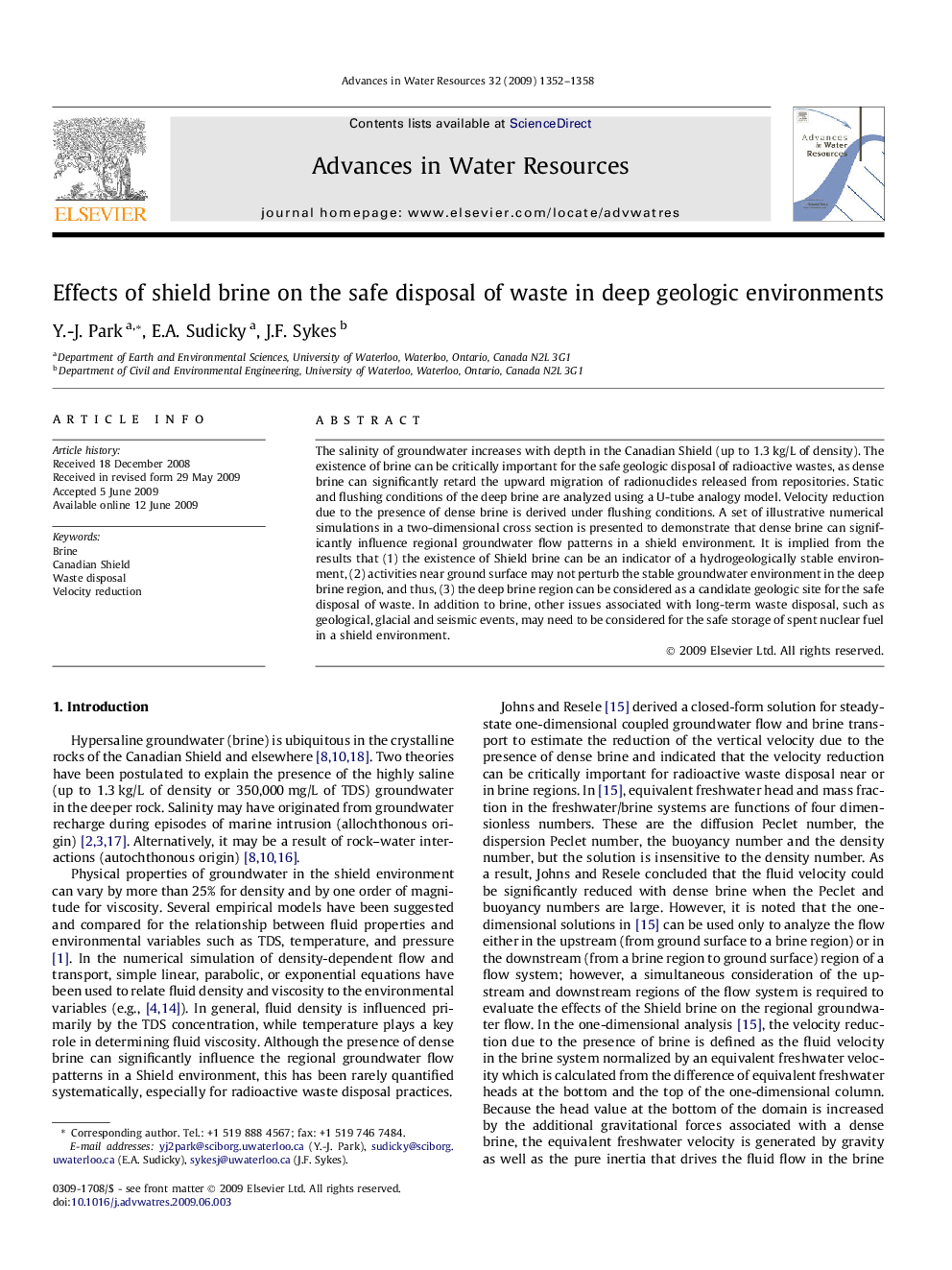| Article ID | Journal | Published Year | Pages | File Type |
|---|---|---|---|---|
| 4526731 | Advances in Water Resources | 2009 | 7 Pages |
The salinity of groundwater increases with depth in the Canadian Shield (up to 1.3 kg/L of density). The existence of brine can be critically important for the safe geologic disposal of radioactive wastes, as dense brine can significantly retard the upward migration of radionuclides released from repositories. Static and flushing conditions of the deep brine are analyzed using a U-tube analogy model. Velocity reduction due to the presence of dense brine is derived under flushing conditions. A set of illustrative numerical simulations in a two-dimensional cross section is presented to demonstrate that dense brine can significantly influence regional groundwater flow patterns in a shield environment. It is implied from the results that (1) the existence of Shield brine can be an indicator of a hydrogeologically stable environment, (2) activities near ground surface may not perturb the stable groundwater environment in the deep brine region, and thus, (3) the deep brine region can be considered as a candidate geologic site for the safe disposal of waste. In addition to brine, other issues associated with long-term waste disposal, such as geological, glacial and seismic events, may need to be considered for the safe storage of spent nuclear fuel in a shield environment.
